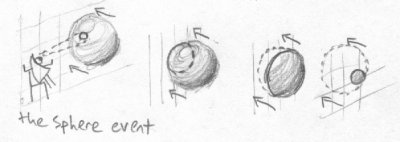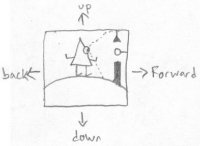
Tetraspace (four dimensional space) is a fascinating place. Events that would be bizarre and mind-bending to us puny little realmic beings would be common-place and taken for granted in tetraspace. Jumping straight into thinking about tetraspace is enough to boggle any human mind. An indirect route must be taken if there is any hope of understanding the possibilities of tetraspace. The method I use here is the one pioneered by the books Flatland and Sphereland, and is the one used in just about every other text about the fourth dimension. First, the I tell of the adventures of a planar being (a two-dimensional being) attempting to understand realmspace. Going from planespace (two-dimensional space) to realmspace will shed light on how to conceptualize going from realmspace to tetraspace. While going from planespace to realmspace may seem overly simple, it is necessary to understand exactly what is happening so that you can understand the process of going from realmspace to tetraspace.
Just as tetraspace is mind-boggling to us realmic beings, realmspace is mind-boggling to planar beings. Things we take for granted are extremely difficult for planar beings to conceptualize. The only thing a planar being can see of our realmic objects is their planar cross sections in his planespace, and the effects of them rotating. At first, he will only be able to conceptualize the effects in planespace of realmic objects. He will only see planar objects in his mind. Eventually, with much deep thought and introspection, he may be able to conceptualize the realmic object itself. Similarly, when starting to think about tetraspace, we will only be able to conceptualize the effects of tetral (four-dimensional) objects in realmspace. We will only be able to see realmic objects in our mind at first. But, by the effects we see, we can carve a sculpture in our minds of how the full object really looks like, and conceptualize the whole of the tetral object.
The name of our planar subject is "Fred". He lives in a plane called Flatland. The only directions that Fred knows of are forward, backward, up, and down. Fred has no concept of right or left. His viewing area is merely a vertical line. Here is a picture of Fred in his native habitat:

Since Fred's viewing area is only a line, he can't see as much at once as we can. Here is the view that Fred would see if he was in the picture above:
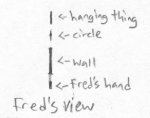
Unfortunately for Fred, he can't see backwards - he can only see forwards. It is impossible for him to simply spin around and face the opposite direction. It is easy for beings in realmspace to face a different direction because they can just spin around, left or right. The only way for beings in planespace to face a different direction though is to turn their head down and heels up. Fred either has to stand upside down to be able to see what is behind him, or he has to walk backwards blind because he only has an eye on his front side.
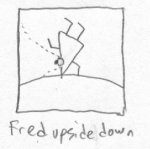
Fred's writing system is very rudimentary, since a linear surface doesn't allow much detail. His writing system looks somewhat like Morse code. Here is what a page from one of his books looks like, in his view:
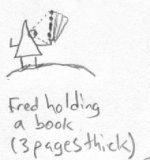
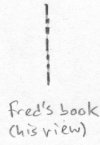
Fred understands the concept of a square. It can be imagined as a series of lines stacked side by side, so that the resulting shape has four sides. He has no concept of what a cube would look like, though. The best he could do is imagine a succession of squares next to each other. As you can see, this is far from the actual representation of a cube. A cube is a series of squares stacked on on top of the other:
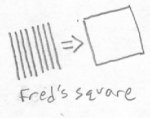
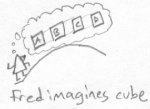
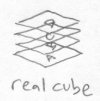
Fred also understands what a circle looks like. It can be imagined as a series of lines stacked side by side in the way that a square is formed, but the lines start small and expand to a certain size, then shrink down again at other side.
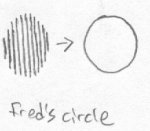
Fred can't understand what a sphere really looks like, though. He can imagine it as a series of circles, starting small and expanding, then shrinking down again. Here is how he might picture it:

Or, he might decide to picture it as a group of concentric circles (circles with the same center):
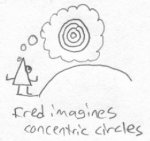

But, as you can see, that's not really what a sphere looks like. Now imagine Fred one day is sitting in his living room, and a sphere from realmspace passes through the air right before his eyes. To him, it will appear as if a circle appeared out of nowhere in front of him. It expands rapidly, and Fred fears that it is going to devour him and his house with him. But to his relief, its growth slows down and stops. Then, the circle starts shrinking again, but slowly. Then it starts to shrink faster and faster until it quickly disappears. Here is what the event looks like:
